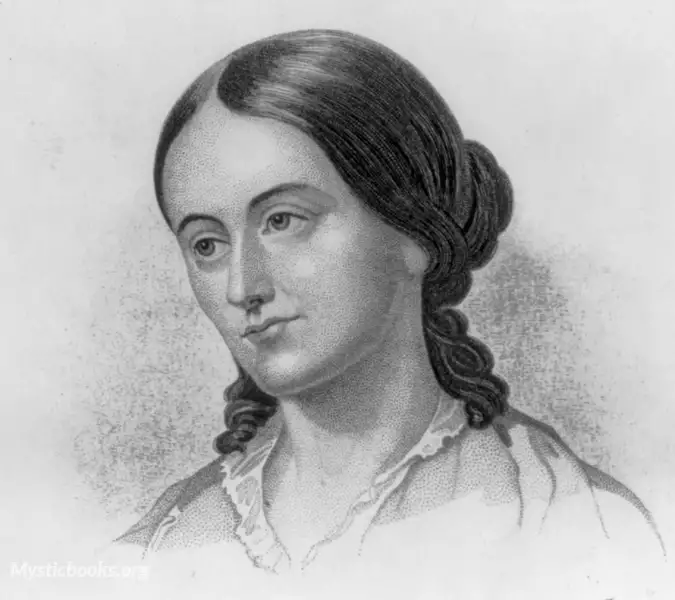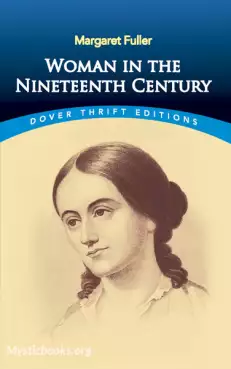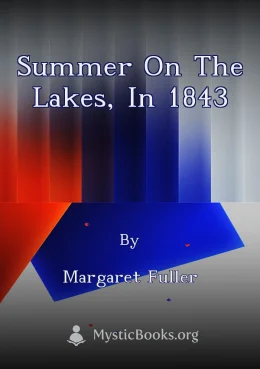
Timeline
Title
Country/Nationality
Margaret Fuller
Sarah Margaret Fuller Ossoli was an American journalist, editor, critic, translator, and women's rights advocate associated with the American transcendentalism movement. She was the first American female war correspondent, writing for Horace Greeley's New-York Tribune, and full-time book reviewer in journalism. Her book Woman in the Nineteenth Century is considered the first major feminist work in the United States.
Born Sarah Margaret Fuller in Cambridge, Massachusetts, she was given a substantial early education by her father, Timothy Fuller, who died in 1835 due to cholera. She later had more formal schooling and became a teacher before, in 1839, she began overseeing her Conversations series: classes for women meant to compensate for their lack of access to higher education. She became the first editor of the transcendentalist journal The Dial in 1840, which was the year her writing career started to succeed before joining the staff of the New-York Tribune under Horace Greeley in 1844. By the time she was in her 30s, Fuller had earned a reputation as the best-read person in New England, male or female, and became the first woman allowed to use the library at Harvard College. Her seminal work, Woman in the Nineteenth Century, was published in 1845. A year later, she was sent to Europe for the Tribune as its first female correspondent. She soon became involved with the revolutions in Italy and allied herself with Giuseppe Mazzini. She had a relationship with Giovanni Ossoli, with whom she had a child. All three members of the family died in a shipwreck off Fire Island, New York, as they were traveling to the United States in 1850. Fuller's body was never recovered.
Sarah Margaret Fuller was born on May 23, 1810, in Cambridgeport, Massachusetts, the first child of Congressman Timothy Fuller and Margaret Crane Fuller. She was named after her paternal grandmother and her mother, but by age nine she dropped "Sarah" and insisted on being called "Margaret." The Margaret Fuller House, in which she was born, is still standing. Her father taught her to read and write at the age of three and a half, shortly after the couple's second daughter, Julia Adelaide, died at 14 months old. He offered her an education as rigorous as any boy's at the time and forbade her to read the typical feminine fare of the time, such as etiquette books and sentimental novels. He incorporated Latin into his teaching shortly after the birth of the couple's son Eugene in May 1815, and soon Margaret was translating simple passages from Virgil. Later in life Margaret blamed her father's exacting love and his valuation of accuracy and precision for her childhood nightmares and sleepwalking.During the day Margaret spent time with her mother, who taught her household chores and sewing. In 1817, her brother William Henry Fuller was born, and her father was elected as a representative in the United States Congress. For the next eight years, he spent four to six months a year in Washington, D.C At age ten, Fuller wrote a cryptic note which her father saved: "On 23 May 1810, was born one foredoomed to sorrow and pain, and like others to have misfortunes."
Fuller was an avid reader, known for translating German literature and bringing German Romanticism to the United States. By the time she was in her 30s, she had earned a reputation as the best-read person, male or female, in New England. She used her knowledge to give private lessons based on the teaching style of Elizabeth Palmer Peabody. Fuller hoped to earn her living through journalism and translation; her first published work, a response to historian George Bancroft, appeared in November 1834 in the North American Review. When she was 23, her father's law practice failed and he moved the family to a farm in Groton. On February 20, 1835, Frederic Henry Hedge and James Freeman Clarke asked her to contribute to each of their periodicals. Clarke helped her publish her first literary review in the Western Messenger in June: criticisms of recent biographies on George Crabbe and Hannah More. In the fall of that year, she suffered a terrible migraine with a fever that lasted nine days. Fuller continued to experience such headaches throughout her life. While she was still recovering, her father died of cholera on October 2, 1835. She was deeply affected by his death: "My father's image follows me constantly", she wrote. She vowed to step in as the head of the family and take care of her widowed mother and younger siblings. Her father had not left a will, and two of her uncles gained control of his property and finances, later assessed at $18,098.15, and the family had to rely on them for support. Humiliated by the way her uncles were treating the family, Fuller wrote that she regretted being "of the softer sex, and never more than now".
In the beginning of 1850, Fuller wrote to a friend: "It has long seemed that in the year 1850 I should stand on some important plateau in the ascent of life ... I feel however no marked and important change as yet." Also that year, Fuller wrote: "I am absurdly fearful and various omens have combined to give me a dark feeling . It seems to me that my future upon earth will soon close . I have a vague expectation of some crisis—I know not what". A few days after writing this, Fuller, Ossoli, and their child began a five-week return voyage to the United States aboard the ship Elizabeth, an American merchant freighter carrying cargo that included mostly marble from Carrara. They set sail on May 17. At sea, the ship's captain, Seth Hasty, died of smallpox. Angelino contracted the disease and recovered.
Possibly because of the inexperienced first mate, now serving as captain, the ship slammed into a sandbar less than 100 yards from Fire Island, New York, on July 19, 1850, around 3:30 a.m. Many of the other passengers and crew members abandoned ship. The first mate, Mr. Bangs, urged Fuller and Ossoli to try to save themselves and their child as he himself jumped overboard, later claiming he believed Fuller had wanted to be left behind to die. On the beach, people arrived with carts hoping to salvage any cargo washed ashore. None made any effort to rescue the crew or passengers of the Elizabeth, though they were only 50 yards from shore. Most of those aboard attempted to swim to shore, leaving Fuller and Ossoli and Angelino some of the last on the ship. Ossoli was thrown overboard by a massive wave and, after the wave had passed, a crewman who witnessed the event said Fuller could not be seen.
Books by Margaret Fuller

Woman in the Nineteenth Century
Margaret Fuller was an American feminist, writer, and intellectual associated with the Transcendentalist movement. Her book Woman in the Nineteenth Century (1845) is considered the first major feminist work in the United States. Her life was short bu...

Summer on the Lakes, in 1843
In "Summer on the Lakes, in 1843," Margaret Fuller, a prominent American feminist and intellectual, recounts her travels through the Great Lakes region during the summer of 1843. Fuller's detailed observations and insightful reflections on the natura...